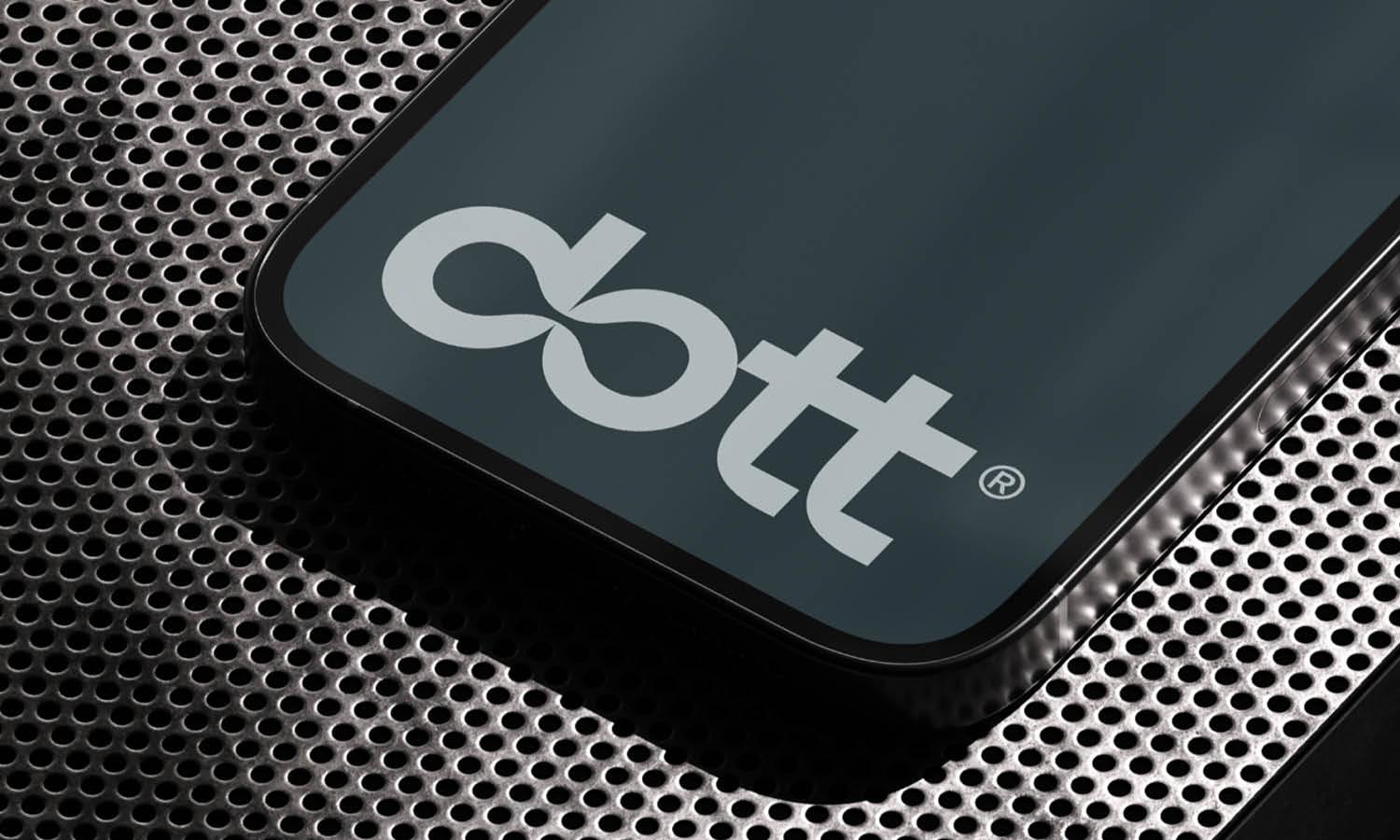Main Reasons Why You Should Only Use Letters For Logo Design

Source: Loren Klein, Shine Bright Lettering, Dribble, https://dribbble.com/shots/17134714-Shine-Bright-Lettering
In the world of branding, the power of simplicity cannot be overstated. Letter-based logos, or logotypes, stand out as a testament to the elegance and effectiveness of using letters in logo design. These logos harness the strength of the alphabet to create a direct and memorable connection to the brand they represent. Opting for a letter-only approach can convey your brand's message clearly and distinctly, without the visual noise that often accompanies more complex designs.
As businesses strive to carve out a unique identity in crowded markets, the choice of a letter-based logo can be strategically advantageous. This approach not only ensures clarity and ease of recognition but also maintains versatility across various platforms and applications. Whether displayed on digital devices or printed on physical media, a well-designed letter logo remains sharp and effective.
In this article, we explore the multifaceted benefits of choosing letters for logo design, providing compelling reasons why this minimalist approach can lead to maximum impact. By focusing on typography and color, companies can express their brand's essence in a straightforward yet powerful way, making letter logos a popular choice for lasting brand representation.
Timeless Appeal
One of the most compelling reasons to choose letters for logo design is their timeless appeal. Unlike imagery or icons that might become outdated as trends evolve, a letter-based logo remains relevant and enduring. This quality of timelessness ensures that a brand does not need frequent redesigns to stay current, providing a significant advantage in terms of brand stability and long-term recognition.
The use of letters taps into the fundamental aspects of human visual perception. Alphabet characters, as universal symbols, are instantly recognizable and easily stored in memory. By focusing on typography, brands can create a strong visual identity that transcends seasonal trends and changes in consumer preference. Moreover, the simplicity of letter logos helps in achieving an elegant and classic look that appeals across generations, making it a preferred choice for businesses aiming for a lasting presence in their market.
Versatility Across Media
Letter-based logos excel in versatility across various media, a crucial attribute in today’s multi-platform marketing environments. The simplicity of letters ensures that the logo maintains its integrity and impact whether it is displayed on a large billboard, a mobile screen, or corporate merchandise. This adaptability is paramount as brands navigate between offline and online spaces, ensuring consistent visibility and recognition.
The scalability of letter logos is particularly beneficial. They can be resized without loss of detail, which is often a challenge with more complex graphic logos. Whether printed on small business cards or featured on massive digital displays, letter logos remain clear and effective. This uniform visibility across different sizes and mediums enhances brand recall and strengthens the brand’s visual identity.
Furthermore, letter-based logos can easily adapt to various design aesthetics required by different media. They can be rendered in multiple color schemes, textures, and backgrounds while retaining their distinctiveness. This flexibility enables a cohesive brand presence across diverse platforms—from traditional print media to digital channels like websites and social media—solidifying the brand’s image in every consumer interaction.
The versatility of letters in logo design not only meets the practical demands of modern branding but also amplifies a brand’s reach and connection with its audience, making it an invaluable tool in the designer’s arsenal.
Cost-Effective
Choosing letters for logo design is not only aesthetically pleasing but also exceptionally cost-effective. This simplicity translates into a more straightforward design process that requires fewer resources in terms of both time and financial investment. Designing a logo with letters often involves less complexity compared to creating elaborate icons or detailed graphics. This reduction in complexity means fewer hours spent on design iterations and revisions, which can significantly lower the cost of logo development.
Additionally, the need for specialized graphic design skills or advanced software capabilities is less critical when focusing on typography-based logos. This opens up the possibility for businesses to use in-house resources or less expensive design services without compromising on the quality and effectiveness of the logo. The simplicity of letter-based logos also means they are easier and cheaper to reproduce across various marketing materials, from digital formats to print media.
Moreover, the cost-effectiveness of using letters in logo design extends to the branding and rebranding processes. A simple typographic update can refresh the brand image without necessitating a complete overhaul, thereby saving on rebranding costs. This approach not only keeps branding efforts affordable but also ensures that they remain aligned with the company’s evolving goals and market conditions.

Source: SAMPLE, Lang Beer Co, Dribble, https://dribbble.com/shots/17022301-Lang-Beer-Co
Instant Brand Recognition
Logos that utilize letters offer instant brand recognition, a crucial factor in today’s fast-paced market environments. By incorporating company initials or a stylized typeface, these logos make a direct connection with the audience, allowing for immediate identification and association with the brand. This rapid recognition is essential in building a strong first impression and fostering long-term customer recall.
The simplicity and clarity of letter-based logos play a significant role in their ability to be recognized quickly. Unlike complex logos that may require time to interpret, a letter logo conveys its message at a glance. This is particularly advantageous in digital media, where consumers often encounter brand images fleetingly. A concise and clear letter logo can effectively capture the attention of potential customers scrolling through their feeds or browsing multiple websites.
Furthermore, using letters in logo design can capitalize on the psychological impact of typography. Different fonts can evoke various emotions and associations, making them powerful tools for communicating brand values and attributes directly through the logo itself. By choosing the right typeface, brands can reinforce their identity and differentiate themselves from competitors, enhancing consumer connection and recognition.
Ease of Trademarking
Opting for letter-based logos significantly simplifies the trademarking process, a critical step for securing brand identity legally. Logos that are composed solely of letters often face fewer legal barriers when it comes to trademark registration. This is primarily because unique typographic treatments and distinct letter arrangements can be easier to protect under trademark laws compared to common symbols or complex graphics, which might be more likely to have been used elsewhere.
The distinctiveness of a letter-based logo—achieved through custom fonts or unique letter stylings—helps in establishing a strong case for trademark eligibility. When a logo is easily distinguishable from others in the same market, it enhances its trademarkability, thus offering better legal protection against infringement. Additionally, the simplicity of letters means there are fewer elements in the design that could conflict with existing trademarks, which can expedite the approval process.
Moreover, once trademarked, the legal defense of a letter-based logo can be more straightforward due to its clear and concise nature. Protecting a simple and unique letter formation is less complex compared to defending a logo with multiple elements that might be dissected in legal scenarios. This not only makes it easier to enforce the trademark rights but also ensures that the brand retains exclusive use of its identity across various platforms.
Scalability
Scalability is a paramount feature of effective logo design, particularly important in our digital age. Letter-based logos stand out for their exceptional scalability, maintaining legibility and impact at varying sizes and across different media. This flexibility is crucial as a logo must adapt seamlessly from the tiny dimensions of a smartphone screen to the expansive surfaces of billboards or building facades.
The intrinsic simplicity of letters means that when they are used in logos, there is a minimal risk of losing detail or clarity as the size changes. This is not always the case with more complex logos, which can become muddled or lose critical elements when scaled down. For digital applications, especially in mobile contexts, a scalable logo ensures that the brand’s identity remains intact and recognizable, regardless of screen resolution or size.
Moreover, scalability extends the usability of a logo, making it a cost-effective solution for businesses. A single, well-designed letter logo can be used in multiple contexts without the need for variations. This uniformity aids in building a cohesive brand image that consumers can easily identify and remember. Whether used in print, online, or physical signage, a scalable letter logo ensures that a brand's visual identity is consistently presented, enhancing brand recognition and customer loyalty.
Professional Appearance
Letter-based logos are renowned for their professional appearance, making them an excellent choice for businesses that aim to convey reliability and seriousness. This style of logo design leverages the power of typography to create a sophisticated and clean aesthetic that communicates competence and authority. The strategic use of fonts and minimalistic design in letter logos not only helps establish an air of professionalism but also ensures that the logo does not distract from the brand's core message.
Choosing the right font is crucial in this context, as different typefaces can evoke various feelings and attributes. For example, serif fonts are often associated with tradition and reliability, while sans-serif fonts can suggest modernity and approachability. The professional appearance of letter-based logos can be tailored to match the brand’s industry and target audience, enhancing the brand’s alignment with its market expectations.
Moreover, the simplicity of letter logos aids in quick recognition and adds to the overall professionalism by avoiding overly complex or whimsical designs that might not be suitable for more conservative sectors. This clarity and elegance ensure that the logo reinforces the business’s credibility and can help in forming trustful relationships with clients and partners.

Source: Logo Collection, Ilham Herry, Dribble, https://dribbble.com/shots/17431673-Logo-Collection
Streamlined Branding
Streamlined branding is crucial for maintaining a consistent and cohesive image across all marketing and operational platforms, and letter-based logos excel in facilitating this coherence. The simplicity and clarity of letters make it easier to integrate the logo into various branding materials without losing the brand's essence or visual identity. Whether it's business cards, websites, merchandise, or corporate documents, a letter-based logo transitions smoothly, maintaining uniformity and strengthening brand recognition.
The adaptability of letter logos means they can be easily adjusted to fit different backgrounds, styles, and applications while still being recognizable. This adaptability prevents the visual fragmentation that can occur when a more complex logo is used in diverse applications, which might require modifications or variations to fit different formats.
Additionally, the use of a simple letter-based logo streamlines the branding process, reducing design and production costs. It eliminates the need for multiple versions of a logo, ensuring that the brand remains consistent in all consumer touchpoints. This consistency is key to building a strong, recognizable brand that customers can identify and trust no matter where they see it.
The streamlined branding enabled by letter logos not only enhances brand recall but also supports marketing efforts by presenting a unified image that communicates stability and reliability to the audience. This unified branding approach fosters a seamless brand experience that can significantly contribute to customer loyalty and brand equity.
Creative Expression Through Font Choices
The choice of font in letter-based logo design is a powerful tool for creative expression. Each font carries its own personality and can convey a variety of emotional undertones and brand values. For instance, serif fonts often represent formality and reliability, making them suitable for legal or financial firms, while sans-serif fonts convey modernity and approachability, ideal for tech companies or startups.
Designers leverage typography to craft logos that not only stand out but also resonate with the target audience. The manipulation of font weight, spacing, and size can dramatically alter the message and feel of a logo. Creative variations like using bold for impact, italic for elegance, or underlined for emphasis allow brands to express nuances of their identity.
Typography in logo design does more than just spell out a company’s name. It communicates the company's story, ethos, and future aspirations through subtle cues in letter shape and arrangement. For instance, a custom font designed specifically for a logo can offer exclusivity and a unique brand identity, setting a company apart from its competitors.
Enhanced Color Dynamics
Incorporating letters into logo design also offers opportunities to utilize color in dynamic ways that enhance brand recognition and emotional connection. Color is a critical component in logo design as it can influence perception and behavior, making the choice of hues in a letter-based logo pivotal to its effectiveness.
The simplicity of letter logos allows for bold and strategic use of color, which can help a logo make a more significant impact. For example, using a consistent color palette across all branding and marketing materials can reinforce brand identity and improve customer recall. The psychological effects of colors—like blue for trust and stability, red for energy and passion, or green for health and tranquility—can be harnessed to communicate specific brand attributes effectively.
Moreover, the versatility of color in letter logos allows for flexibility in various applications. A well-chosen color scheme can make a logo pop on digital platforms and print media alike. This adaptability ensures that the logo remains effective and eye-catching, regardless of where it appears.
The use of gradient fills, shadow effects, and color overlays can also add depth and texture to letter logos, making them more visually appealing and engaging. Such techniques enhance the visual interest of a logo without complicating its design, maintaining clarity and impact.
Overall, the strategic use of color in letter-based logos not only increases their aesthetic appeal but also amplifies their communicative power, making them a potent tool in building a strong and recognizable brand.
Conclusion
Utilizing letters in logo design offers numerous benefits that extend beyond aesthetic simplicity. From enhancing brand recognition with their timeless appeal to providing cost-effective solutions and legal ease in trademarking, letter-based logos are a strategic choice for any business. The flexibility and scalability ensure that these logos perform well across various media, maintaining brand consistency. Moreover, the creative possibilities with font choices and color dynamics allow for unique expressions of brand identity. Embracing letters in logo design not only simplifies the branding process but also solidifies a company's presence in the competitive market landscape.
Let Us Know What You Think!
Every information you read here are written and curated by Kreafolk's team, carefully pieced together with our creative community in mind. Did you enjoy our contents? Leave a comment below and share your thoughts. Cheers to more creative articles and inspirations!
















Leave a Comment